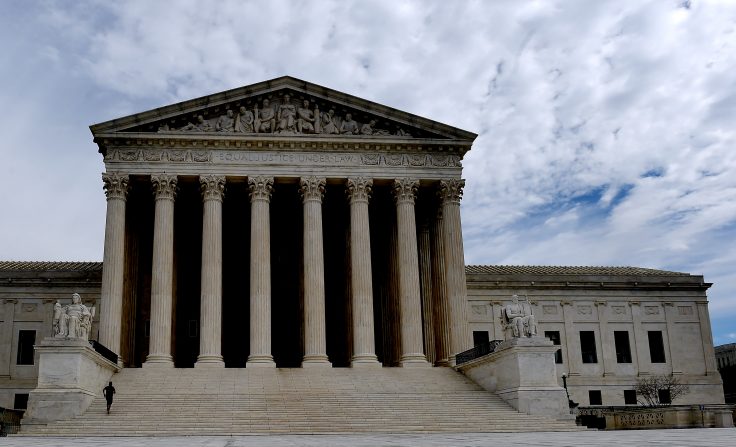The Supreme Court has yet to settle on an alternative for cases delayed due to the coronavirus pandemic, as lower federal courts transition to teleconferencing and other remote work technologies.
In some sense, the Supreme Court's work is going on as normal. The justices have handed down opinions digitally twice, and petitions are still arriving at the Court regularly, albeit with an additional grace period. Members of the Court have also met in conference twice to discuss official business, with Chief Justice John Roberts presiding from the Court itself while other justices participate by phone.
The justices canceled the Court's March argument session, which was to run from March 23 to April 1. Though the April cases have not yet been postponed, President Donald Trump extended social distancing guidelines for another month on Sunday, seemingly calling the Court's April argument session into question. For the moment, the justices are publicly proceeding as though the April cases will be heard. The Court issued an order Monday dividing time in an argument scheduled for April 21.
It's not clear how the Court will reschedule arguments delayed due to the pandemic. There were 11 cases scheduled for argument in March and another 9 in the imperiled April sitting. While some of those disputes might be deferred, others are time-sensitive. One argument involves congressional subpoenas for the president's financial records. Those subpoenas, which were issued months ago, will expire at the end of the year. Another argument involves a constitutional challenge to state laws that punish "faithless" presidential electors. Presumably, that issue must be decided before the November election.
The Court hears arguments from October to April and dispenses with the last of its opinions by late June. The justices are on something of a hiatus from July to September until the new term begins in October. As such, extending the term into the summer months is one viable option.
The Court might also simply push all affected cases until next term. A hybrid solution is also possible, under which some cases would be resolved this term, with the remaining matters rescheduled for October or November.
Others say the Court should embrace technology to continue normal operations.
Gabe Roth of Fix the Court, a nonpartisan judicial watchdog, urged the justices to allocate funds received from the $2 trillion CARES Act stimulus package toward livestreaming technology. At present, the Court does not allow broadcasts of its proceedings, though it releases audio recordings of arguments on the Friday that immediately follows a given case.
Congress allocated an additional $500,000 in the stimulus to support Supreme Court operations. The stimulus authorizes the Court to "prevent, prepare for, and respond to coronavirus."
"High-quality, multi-location livestreaming technology costs a small fraction of what the Supreme Court is receiving, so any excuses they may have had over going live, whether via phone or video conference or from an empty courtroom, will have evaporated," Roth said in a statement.
"Enabling virtual participation would better protect justices and litigants, many of whom are at heightened risk to the ongoing pandemic," Roth added. Six of the nine justices are at least 65 years of age, placing them at high risk of serious infection.
The justices have persistently resisted pressure from Congress and outside groups to televise their proceedings. Justices Samuel Alito and Elena Kagan told a House appropriations panel in March 2019 that broadcasting arguments would prompt the justices to self-censor, for fear their fanciful hypotheticals or abstract questions would be taken out of context.
Even as livestreaming is unlikely at the High Court, many federal courts have embraced video and teleconferencing measures to ensure continuity of operations. The CARES Act authorizes trial courts to conduct certain hearings by video or phone, such as arraignments or probation revocation proceedings.
Misdemeanor pleas and sentences may also be processed remotely, though felony cases must still be conducted in person unless doing so would seriously jeopardize public health and safety, and the presiding judge finds "specific reasons that the plea or sentencing in that case cannot be further delayed without serious harm to the interests of justice."
